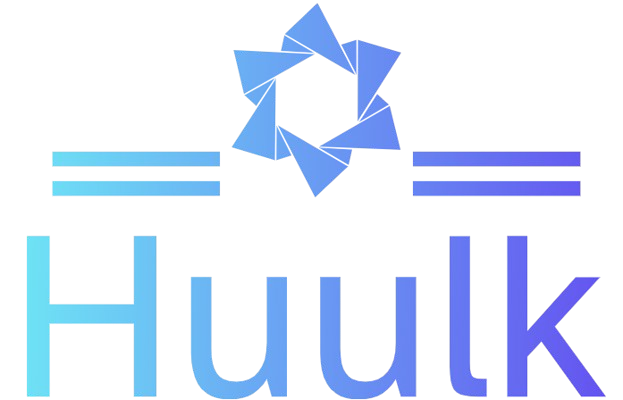Introduction to Digital Communication of file over miles
In a world where communication has transcended geographical boundaries, the phrase “files over miles” perfectly encapsulates our modern experience. Gone are the days when sending a message required weeks of waiting for delivery. Today, we can exchange ideas, documents, and emotions in an instant, thanks to rapid advancements in digital communication.
From simple text messages to elaborate video calls, technology has reshaped how we connect with one another. As we delve into this journey through time—from Morse code to the age of social media—it’s fascinating to witness how each innovation has influenced not only our methods of communication but also our relationships and society as a whole.
Join me as we explore this evolution and consider what it means for our future interactions in an increasingly digital landscape!
The Early Days: From Morse Code to Email
The journey of digital communication began with the simplicity of Morse Code. In the early 1830s, Samuel Morse and Alfred Vail introduced a system that translated letters into dots and dashes. This innovation allowed messages to travel swiftly over telegraph wires, revolutionizing long-distance communication.
Fast forward to the 1970s, when email emerged as a game changer. Ray Tomlinson sent the first networked message using the @ symbol, paving the way for exchanging information instantaneously. Suddenly, communicating across great distances was no longer cumbersome.
As technology evolved, so did our methods. The transition from physical mail to electronic correspondence transformed personal and professional interactions forever. No longer did individuals have to wait days for a reply; emails arrived in seconds.
This evolution marked just the beginning of an era where files could traverse miles at lightning speed—a profound shift that would shape human connections in ways we never imagined.
The Emergence of Social Media and Instant Messaging
Social media and instant messaging revolutionized how we connect. Platforms like Facebook, Twitter, and Instagram emerged as powerful tools for sharing thoughts and experiences. Suddenly, the world was at our fingertips.
Instant messaging apps, such as WhatsApp and Messenger, bridged gaps in real-time communication. Friends and family could chat instantly across distances. The barriers of time zones diminished.
These platforms also facilitated networking on an unprecedented scale. Professionals linked with peers globally while businesses reached new audiences directly.
However, this rapid evolution brought challenges too. Miscommunication became more common with brevity replacing depth in conversations.
The rise of digital personas led to curated lives that sometimes overshadowed reality. Authentic connections faced scrutiny amid the noise of constant notifications.
Despite these hurdles, social media remains a cornerstone of modern interaction—reshaping friendships, debates, and even activism in ways previously unimaginable.
The Impact on Society and Relationships
Digital communication has fundamentally altered how we connect with each other. With the click of a button, friends and family can share moments in real time, regardless of distance. This instant access fosters relationships that might have otherwise faded.
Yet, this convenience comes with its challenges. People often find themselves communicating more through screens than face-to-face interactions. Misunderstandings can occur without the nuances of vocal tone or body language.
Furthermore, social media platforms create echo chambers where opinions are reinforced but rarely challenged. The result? A society increasingly polarized by digital conversations rather than unified through shared experiences.
Despite the ease of staying connected online, many feel lonelier than ever before. While technology offers new ways to engage and share, it also raises questions about loneliness and authentic connection in an increasingly virtual world.
Challenges and Controversies in the Digital Age
The digital age, while revolutionizing communication, has also birthed a myriad of challenges. Privacy concerns loom large as more personal data is shared online. Many feel they have little control over their information once it’s uploaded.
Misinformation spreads rapidly in this interconnected world. A single tweet can ignite a wildfire of falsehoods, impacting public opinion and societal trust.
Moreover, the rise of cyberbullying highlights the darker side of instant messaging and social media platforms. Anonymity often emboldens harmful behavior that leaves lasting scars on victims.
Screen addiction poses another hurdle. People find themselves glued to devices rather than engaging in face-to-face interactions. This shift not only alters relationships but can also impact mental health significantly.
Navigating these complexities requires awareness and proactive measures from both individuals and technology companies alike.
The Future of Communication Technology
The future of communication technology is poised for incredible transformation. Advancements in artificial intelligence and machine learning are set to redefine how we connect.
Imagine virtual reality meetings that feel as real as face-to-face interactions. People could collaborate from anywhere in immersive environments, breaking geographical barriers like never before.
Moreover, the rise of 5G networks promises lightning-fast data transfer. This will enable seamless sharing of files over miles with minimal lag, enhancing remote work experiences significantly.
As we embrace voice-activated devices and smart assistants, communicating will become more intuitive. Just think—sending messages or files with simple verbal commands may soon be the norm.
However, ethical considerations around privacy and security must accompany these innovations. Striking a balance between technological advancement and user protection will be crucial as we move forward into this exciting era of communication.
Conclusion: Striking a Balance Between Virtual and Face-to-Face Communication
The rapid evolution of digital communication has reshaped how we connect and share information. With the ability to send files over miles at lightning speed, our interactions have become more convenient than ever. Yet, this convenience carries its own set of challenges.
As technology continues to advance, finding harmony between virtual connections and face-to-face interactions is essential. While emails, social media, and instant messaging have transformed our communication landscape, they cannot replace the richness of personal interaction. The nuances conveyed through body language or a shared moment are irreplaceable.
Each method of communication serves a purpose; however, it’s crucial to recognize when one form may be more beneficial than another. Striking that balance can lead to healthier relationships in both personal and professional spheres.
Embracing the benefits of digital tools while cherishing the value of genuine human connection will pave the way for meaningful engagement—ensuring that as we send files over miles, we also nurture bonds that truly matter.
FAQs
1. What is “Files Over Miles”?
“Files Over Miles” refers to the modern capability to exchange files, messages, and other forms of digital communication instantaneously across vast distances. This phrase highlights the dramatic shift from historical methods of communication, which often involved lengthy delays, to today’s instantaneous digital exchanges facilitated by technologies like email, social media, and instant messaging.
2. How did Morse Code contribute to the evolution of digital communication?
Morse Code, developed in the 1830s, was a groundbreaking method that allowed for the rapid transmission of messages over telegraph wires. By translating letters into a series of dots and dashes, Morse Code enabled near-instantaneous communication over long distances, a significant advancement from previous methods that relied on physical transport. This innovation laid the foundation for future developments in digital communication.
3. What role did email play in transforming communication?
Email revolutionized communication by allowing users to send and receive messages almost instantaneously across the globe. Introduced in the 1970s, email replaced traditional mail’s lengthy delays with immediate delivery. This shift facilitated faster personal and professional correspondence, marking a pivotal moment in the evolution of digital communication.
4. How have social media and instant messaging changed the way we connect?
Social media and instant messaging have drastically altered interpersonal communication by enabling real-time interactions regardless of geographic location. Platforms like Facebook, Twitter, and WhatsApp allow users to share updates, photos, and messages instantly, fostering connections that span time zones and continents. However, these platforms have also introduced challenges such as miscommunication and the creation of curated digital personas.
5. What are some of the challenges associated with the rise of digital communication?
Digital communication, while enhancing connectivity, has introduced several challenges. Privacy concerns arise as personal data is increasingly shared online, and misinformation can spread rapidly, impacting public trust. Cyberbullying has become more prevalent due to the anonymity of online interactions, and screen addiction can lead to diminished face-to-face interactions and potential mental health issues. Addressing these challenges requires awareness and proactive measures from both users and technology developers.







